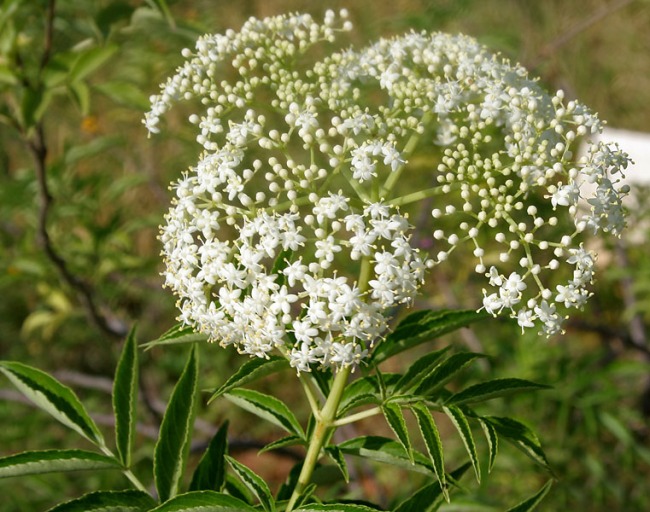
Sambucus canadensis. J.M. Garg. Wikimedia Commons.
As the days grow ever longer and the thermometer and humidity climbs up and up, I’m reminded summer is quickly approaching the Northern Hemisphere. While Memorial Day is the unofficial start in the States, and the Solstice the more official start, the real start to summer is subject to guess and preference. In any case, as the weather continually warms, scents put on a different character themselves, as everything seems to become more powerful. For the late-blooming ‘Miss Kim’ Lilacs, and Irises, this can be a good character for a garden. However, our friends with indolent compounds again remind us that heat is not always better. In fact, both Elderberry and Privet smell quite tolerable when caught on a breeze or on a cool day as compared to in warm, humid weather.
Elderberries are native to every continent except Africa (unless you count Madeira as belonging to Africa) and just about every climate imaginable as well. The main species is S. nigra, native to the majority of the Northern Hemisphere. All species make wonderful small trees and large shrubs, with edible berries when ripe, but the flowers are only slightly tolerable. The single flowers grouped together form large corymbs, looking like dinner plates when in full bloom. The fragrance is sweet but also slightly fetid, reminiscent of Chestnut blooms as the weather warms. The foliage also has a strange scent that is not particularly pleasant. In any case, a wonderful jam is made from the berries, as are the liquers made from the stems and berries, which carry very little of the fetid aroma that the live plant does.

Ligustrum japonicum. Kenpei. Wikimedia Commons.
Privet is a shrub that grows almost as commonly as elderberry, but without the edible fruits. Privets are part of the Olive family, a family known for its scented species, and this one is certainly well represented. Like elderberry, it has a scent tolerable in small doses and in the right environment- otherwise its just a recipe for a headache. Its sweet enough but with a rank indolent kick that cloys too quickly. While there are several species, L. japonicum is the most widely grown in America, and grows naturally in California and in the South. It is particularly well adapted to the Southeast, and becomes invasive from the Appalachians south to the Coast, growing in many forests and byways of the region. The plant itself forms a nice hedge and grows densely to screen out unwanted views. It is an evergreen, hardy to zone 5b.
The season marches on! Its nearing summer here and I’m still behind for May, but what does one expect for a month brimming with life?
